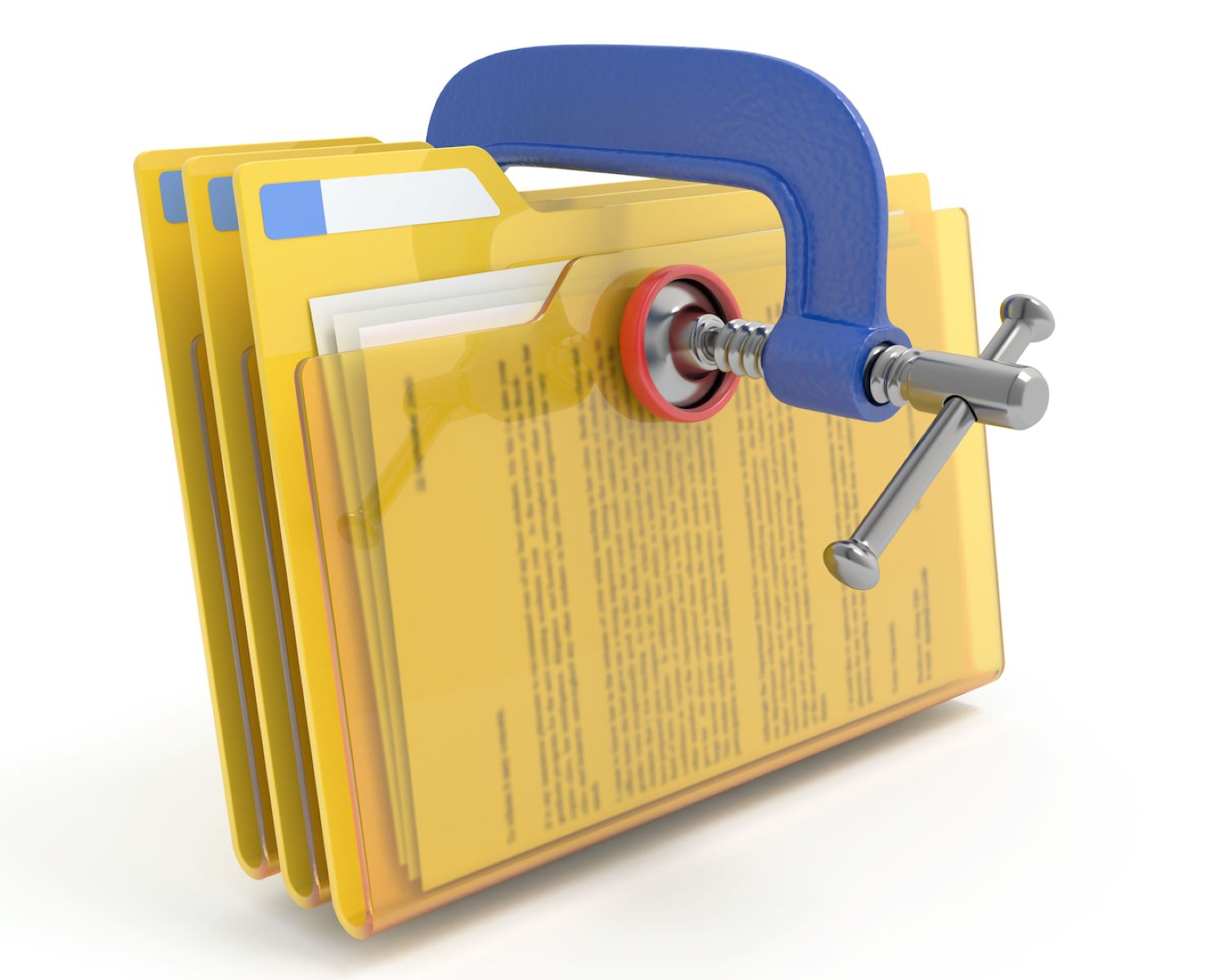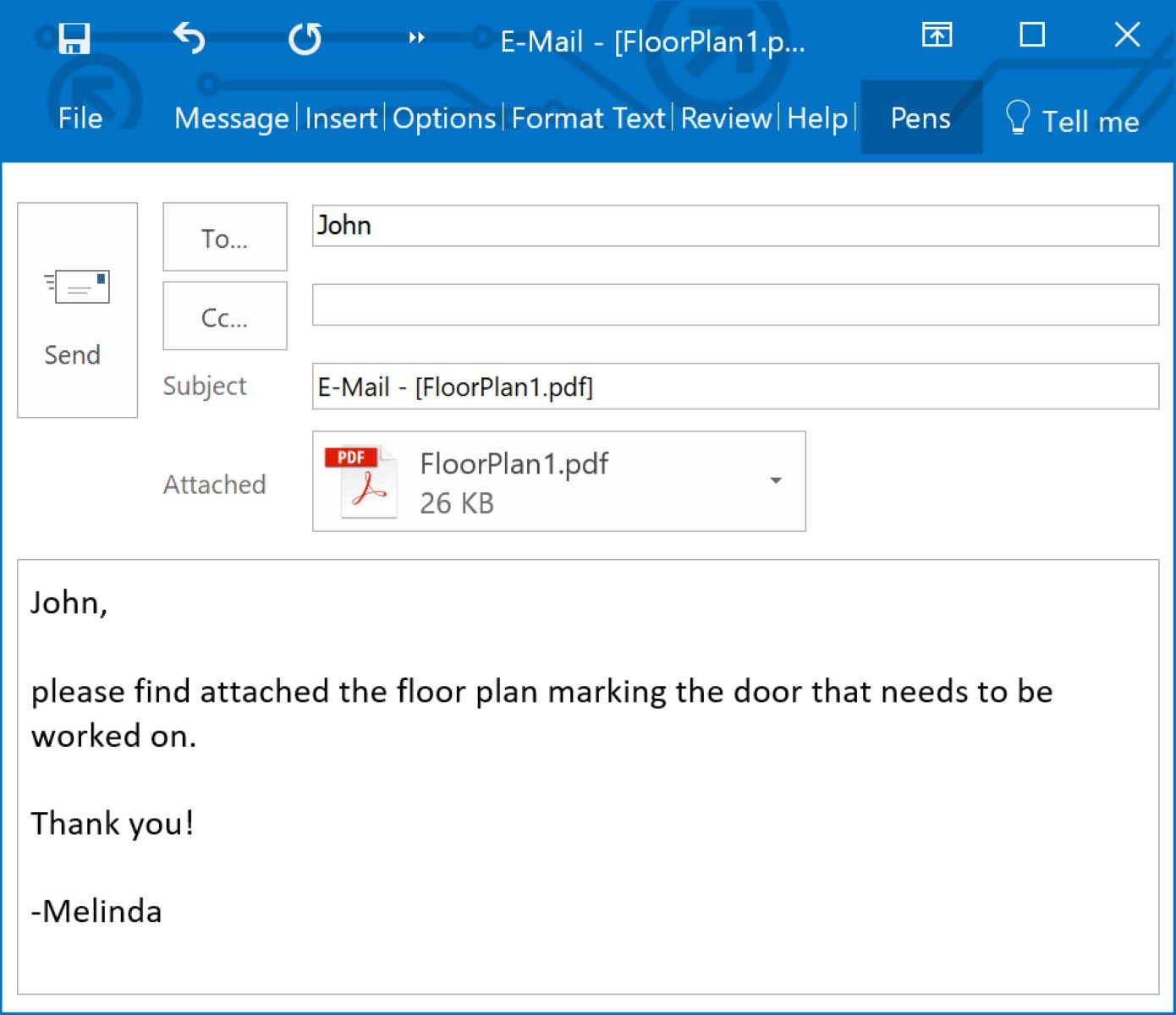Introduction
When it comes to sending large files via email, it can be quite a challenge. Many email providers have restrictions on file attachment size, causing frustration and inconvenience for users. However, there is a simple solution – compressing the files before sending them.
Compressing files for email not only reduces their size but also makes it easier and faster to send them over the internet. By using file compression techniques, you can significantly reduce the file size without compromising the quality of the content. This allows you to send large files more efficiently and saves both time and bandwidth.
In this article, we will explore the benefits of file compression for email and guide you through the process of compressing files on different operating systems. Whether you use Windows, Mac, or Linux, we’ve got you covered.
Furthermore, we’ll provide you with expert tips on efficiently compressing files and guide you on how to send compressed files via email. So, if you want to save time, overcome attachment size limitations, and ensure smooth file transfers, keep reading!
Before we delve into the specifics of file compression, let’s understand why it’s essential for email communication.
Why Compressing Files for Email?
When it comes to sending files via email, there are several reasons why compression plays a crucial role. Let’s take a look at some of the key benefits of compressing files before attaching them to your emails:
- Overcoming Attachment Size Limits: Email providers often impose limits on the size of file attachments that can be sent. Compressing files allows you to reduce their size, enabling you to bypass these restrictions and send larger files without any issues.
- Improved Transfer Speed: Large files can take a significant amount of time to upload and download. By compressing files, the overall file size is reduced, resulting in faster transfer speeds. This ensures that your email attachments are delivered quickly and efficiently.
- Efficient Storage and Bandwidth Usage: Compressed files take up less storage space on both the sender’s and recipient’s devices. This is especially beneficial when dealing with limited storage capacity or when the recipient’s inbox is nearing its storage limit. Additionally, since compressed files are smaller in size, they utilize less bandwidth during the sending and receiving process, making it easier for users with slower internet connections to download the attachments.
- Increased Data Security: Compression can also enhance data security. When you compress a file, it is usually encrypted, adding an extra layer of protection to your sensitive information. This minimizes the risk of unauthorized access or tampering during email transmission.
- Convenience and Organization: Compressing multiple files into a single archive makes it more convenient to send and receive multiple attachments in one go. This helps in maintaining a more organized email workflow, reducing the clutter in your inbox and making it easier for the recipient to manage and access the files.
By understanding the advantages of compressing files for email, you can optimize your file transfer process, save valuable time, and ensure a seamless experience for both you and the recipients of your emails.
Choosing the Right File Compression Format
When it comes to compressing files for email, it is essential to choose the right file compression format. Different formats offer varying levels of compression and compatibility across different operating systems. Let’s take a look at some popular file compression formats:
- ZIP: ZIP is one of the most widely used file compression formats. It is supported by almost all operating systems, making it a versatile choice. ZIP files can compress multiple files and folders into a single archive, making it convenient for sending and receiving multiple attachments.
- RAR: RAR (Roshal Archive) is another popular compression format known for its high compression ratio. RAR files offer better compression than ZIP but may require third-party software to extract the files, especially on certain operating systems.
- 7z: 7z is an open-source compression format known for its excellent compression capabilities. It supports compressing files with high compression ratios, making it a suitable choice for large files. However, similar to RAR, using third-party software may be necessary to extract 7z files on some operating systems.
- TAR: TAR (Tape Archive) is a format used primarily for archiving multiple files together without compression. It is often combined with other compression formats, such as GZIP or BZIP2, to create compressed TAR files (e.g., .tar.gz or .tar.bz2).
- GZIP: GZIP is a compression format commonly used in conjunction with TAR to create compressed TAR files. It offers moderate compression and is supported by most operating systems.
- Others: There are various other compression formats available, such as LZH, ARC, and CAB. These formats may have specific use cases or compatibility limitations, so it’s important to choose them based on the requirements and compatibility of both the sender and recipient systems.
When selecting a compression format, consider the specific requirements of the recipients and the operating systems they use. It’s often best to choose a widely supported format, such as ZIP or GZIP, to ensure compatibility across different platforms.
Remember that the choice of compression format also depends on the type of files you’re compressing. Some formats may perform better with certain file types, so it’s worth experimenting to find the option that offers the best compression ratio without sacrificing file integrity.
With the right file compression format, you can effectively reduce file size while maintaining compatibility and ensuring that your compressed files are easily accessible for the recipients.
How to Compress a File on Windows
If you’re using Windows, there are several methods you can use to compress files. Let’s explore a few common techniques:
- Using Built-in Tools: Windows has a built-in compression utility called File Explorer. To compress a file or folder, follow these steps:
– Locate the file or folder you want to compress in File Explorer.
– Right-click on the file or folder and select “Send to” from the context menu.
– Choose “Compressed (zipped) folder.” This will create a new ZIP file containing the compressed version of your file or folder. - Using Third-Party Compression Software: If you prefer more advanced compression options or need to work with different file formats, you can use third-party software. Some popular options include WinRAR, 7-Zip, and WinZip. Download and install the software of your choice, then follow the specific instructions provided with the software to compress your files.
- Using Command Prompt: Windows also offers a way to compress files using the Command Prompt. Here’s how you can do it:
– Open the Command Prompt by searching for “cmd” in the Start menu or by using the Run dialog (Windows key + R) and typing “cmd”.
– Navigate to the directory where the file is located using the “cd” command.
– Type the following command and press Enter:
compact /c "filename"
where “filename” represents the name of the file you want to compress. This will compress the file and create a new compressed version in the same directory.
These methods should cover most of your file compression needs on Windows. Choose the method that suits your preferences and requirements. Remember to consider the file formats you’re working with and ensure that the compressed files are easily accessible for the intended recipients, regardless of the method you choose.
Now that you know how to compress files on Windows, let’s move on to the next section to learn how to compress files on Mac.
How to Compress a File on Mac
If you’re using a Mac, you have several options for compressing files. Here are a few methods you can use:
- Using the Built-in Archive Utility: Mac comes with a built-in compressing tool called Archive Utility. To compress a file or folder, follow these steps:
– Select the file or folder you want to compress.
– Right-click on the selected item and choose “Compress [name].” This will create a compressed ZIP file in the same location as the original file or folder. - Using Third-Party Compression Software: If you prefer more advanced compression options or need to work with different file formats, you can use third-party compression software. Some popular options include The Unarchiver, StuffIt Expander, and Keka. Simply download and install the software of your choice, then use the provided instructions to compress your files.
- Using Terminal: For those who prefer using commands, macOS provides the Terminal utility. Here’s how to compress a file using Terminal:
– Open Terminal from the Applications > Utilities folder or by using Spotlight Search.
– Navigate to the directory where the file is located using the “cd” command.
– Type the following command and press Enter:
zip -r archive.zip filename
Replace “archive.zip” with the desired name of the compressed file and “filename” with the name of the file you want to compress. This will create a ZIP file containing the compressed version of your file.
Whether you choose to use the built-in Archive Utility, third-party software, or Terminal commands, compressing files on a Mac is a straightforward process. Select the method that best suits your needs and preferences. Ensure that the compressed files are compatible with the intended recipients’ operating systems to ensure seamless access to the files.
Now that you know how to compress files on a Mac, let’s move on to the next section to learn how to compress files on Linux.
How to Compress a File on Linux
If you are using a Linux system, there are several methods available for compressing files. Let’s explore a few common techniques:
- Using the tar Command: The
tarcommand is commonly used on Linux systems to create compressed archives. Follow these steps to compress a file or directory:
– Open the terminal.
– Navigate to the location of the file or directory using thecdcommand.
– To compress a file, use the following command:
tar -czvf archive.tar.gz filename
Replacearchive.tar.gzwith the desired name of the compressed file andfilenamewith the name of the file you want to compress. To compress a directory, replacefilenamewith the name of the directory. - Using Third-Party Compression Tools: There are several third-party compression tools available for Linux, such as
gzip,bzip2, and7zip. Install the desired tool using your package manager, and then compress files using the specific commands, such asgzip filenameorbzip2 filename. - Using File Managers: Some Linux distributions come with graphical file managers that provide compression functionality. For example, on Ubuntu, the file manager called Nautilus allows you to right-click on a file or directory, select “Compress,” and choose the desired archive format.
Choose the method that best suits your preferences and requirements. Ensure that you select a compression format that is compatible with the recipients’ operating systems to ensure smooth file extraction at their end.
With these methods, compressing files on a Linux system becomes a simple task. Whether you prefer working with the terminal or utilizing a graphical file manager, Linux offers various options to suit your needs.
Now that you know how to compress files on Linux, let’s move on to the next section to learn about compressing photos for email.
Compressing Photos for Email
When it comes to sending photos via email, it’s important to consider both the file size and the image quality. High-resolution photos can be quite large in size, making them challenging to send as email attachments. Compressing photos not only reduces their file size but also optimizes them for efficient transmission and maintains acceptable image quality. Here are some methods to compress photos for email:
- Resize the Image: One of the simplest ways to reduce the file size of a photo is by resizing it. You can use photo editing software or online tools to resize the image dimensions, such as width and height, to a smaller size. This will reduce the overall file size without compromising the visual appearance significantly. However, be cautious not to resize the image too much, as it may result in loss of quality.
- Optimize Image Compression: Most photo editing software allows you to adjust the compression settings for saving images. By reducing the image quality slightly while saving, you can achieve a significant reduction in file size. However, be mindful not to over-compress the image, as it can lead to visible loss of detail and clarity.
- Convert to a Web-Friendly Format: Certain image formats are better suited for web and email use due to their superior compression capabilities. Consider converting your photos to web-friendly formats such as JPEG or PNG. JPEG is generally ideal for photographs, while PNG is better for images with transparency or text. These formats strike a balance between file size and image quality.
- Use Online Image Compression Tools: There are many online tools available that can compress images for you. These tools automatically optimize the image size and quality while maintaining a visually appealing output. Simply upload your photo to the tool, choose the desired compression level, and download the compressed version. Some popular online image compression tools include TinyPNG, JPEGmini, and Squoosh.
Remember to strike a balance between file size and image quality when compressing photos for email. While reducing the file size is essential, it’s equally important to ensure that the compressed photo retains good visual appearance and detail.
By employing these techniques, you can effectively compress photos for email, making it easier and quicker to share your cherished memories with friends, family, or colleagues.
Tips for Compressing Files Efficiently
Compressing files efficiently not only reduces their size but also ensures optimal file transfer and storage. To make the most of your file compression process, consider the following tips:
- Choose the Right Compression Format: Selecting the appropriate compression format is crucial. Consider factors such as file compatibility, compression ratio, and the recipients’ operating systems when deciding which format to use.
- Balance File Size and Quality: Strive for a balance between file size reduction and maintaining acceptable quality. Over-compressing files can result in compromised visual or auditory quality. Experiment with different compression settings to find the optimal sweet spot for your specific files.
- Organize Files Before Compression: Before compressing files, organize them into logical groups or categories. This makes it easier to manage and locate specific files later on, especially when dealing with large quantities of compressed files.
- Remove Unnecessary Files: Before compressing, remove any unused or redundant files. Review your files and eliminate any duplicates, temporary files, or unnecessary file versions to further reduce the overall file size.
- Consider Batch Compression: If you have multiple files or folders to compress, consider batch compression. This allows you to compress several files or folders at once, saving time and effort. Use tools or software that support batch compression to streamline the process.
- Encrypt Sensitive Files: If you are compressing files that contain sensitive or confidential information, consider encrypting them for added security. Many compression tools offer encryption options to protect your files during transit or storage.
- Document Compression Process: Keep track of your compression process by documenting details such as compression settings, file names, and compression ratios. This documentation can be useful for future reference or if you need to repeat the compression process.
- Regularly Update Compression Software: Ensure that you are using the latest version of your compression software. Newer versions often include bug fixes, performance enhancements, and improved compression algorithms that can provide better results.
Following these tips will help you compress files more efficiently, ensuring optimal file sizes, compatibility, and overall file management.
Sending Compressed Files via Email
Once you have compressed your files, you’re ready to send them via email. Here are some important considerations to keep in mind when sending compressed files:
- Attach the Compressed File: Depending on your email provider, there may be a file size limit for attachments. Ensure that the size of the compressed file is within the allowable limit. If the file is still too large, consider splitting it into multiple parts or using a file-sharing service instead.
- Use Descriptive File Names: When naming your compressed file, choose a name that clearly represents the content. This will help both you and the recipient identify the file without the need to open it.
- Mention Compression in the Email: In the email body, it’s helpful to let the recipient know that you have compressed the file. This way, they will understand the purpose of the attachment and know that they may need to extract the files before use.
- Provide Extraction Instructions: If the recipient is not familiar with file compression techniques, consider including instructions on how to extract the compressed files. You can provide step-by-step instructions specific to their operating system or recommend a specific compression software if needed.
- Verify File Integrity: Before sending the email, verify that the compressed file is intact and can be successfully extracted. This will prevent any potential issues for the recipient when attempting to open or extract the files.
- Consider Security: If the compressed file contains sensitive or confidential information, you may want to consider encrypting it with a password. Communicate the password to the recipient separately to ensure secure access to the files.
- Follow Appropriate Email Etiquette: Lastly, always follow email etiquette when sending attachments. This includes writing a clear and concise email, using a professional tone, and considering file size limitations of the recipient’s email provider.
Following these guidelines will help ensure a smooth and successful file transfer process when sending compressed files via email. If needed, communicate with the recipient to ensure they have the necessary information for extracting and using the compressed files.
Conclusion
Compressing files for email is a practical and efficient way to overcome attachment size limitations and optimize the file transfer process. Whether you’re using Windows, Mac, or Linux, there are various methods and tools available to compress files effectively.
By choosing the right compression format, balancing file size and quality, and following best practices, you can reduce file sizes without compromising the integrity or accessibility of the content. Additionally, compressing photos and considering efficient file compression techniques contribute to a seamless email workflow.
When sending compressed files, it’s important to ensure they are within the attachment size limits and use descriptive file names. You may also want to include instructions for extracting the files and consider encryption for sensitive information.
Overall, compressing files for email streamlines file transfers, saves time and bandwidth, and improves storage efficiency. By implementing the tips and techniques discussed in this article, you can confidently and efficiently send compressed files via email, enhancing productivity and communication in both personal and professional settings.

























